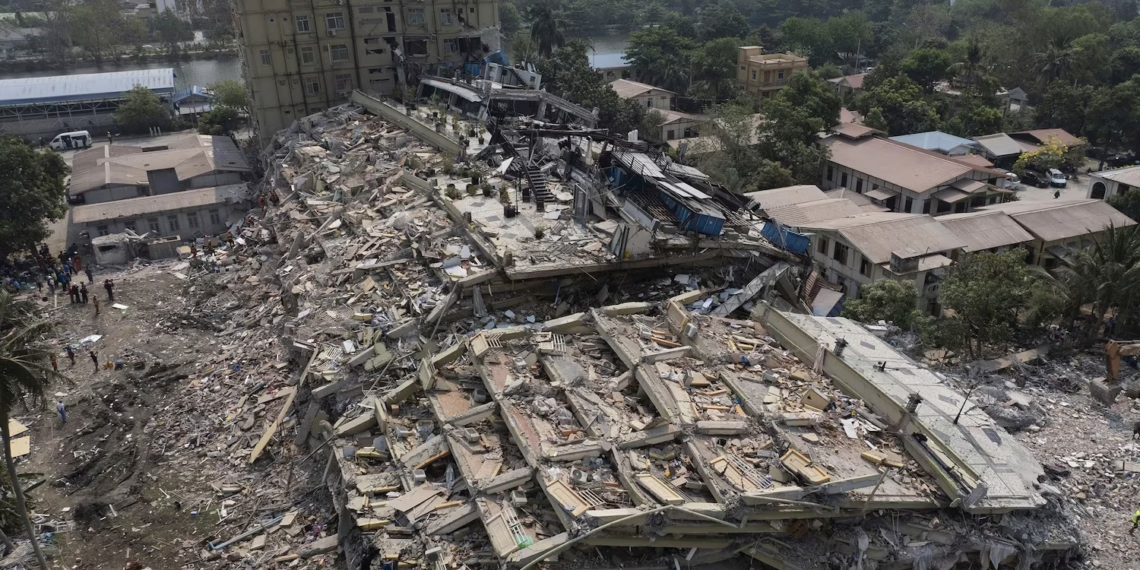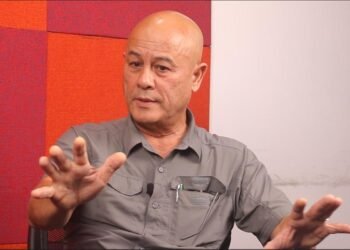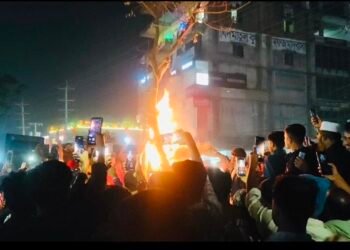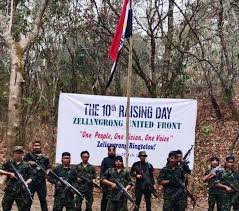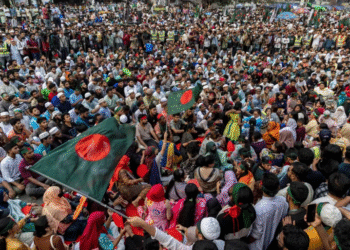As Myanmar struggles with the aftermath of a powerful earthquake, conflict-hit regions face severe challenges. Aid convoys are being turned back, and millions are at risk of hunger and displacement.
BY PC Bureau
April 3, 2025 – The catastrophic earthquake that ravaged central Myanmar last Friday has claimed the lives of over 3,000 people, with the official death toll continuing to rise as rescue efforts grapple with the scale of devastation and ongoing aftershocks. The 7.7-magnitude tremor, which struck between the densely populated regions of Sagaing and Mandalay, has plunged millions into a desperate struggle for survival, exacerbating existing humanitarian challenges within a nation already fractured by political turmoil.
Myanmar Radio and Television, the state-run broadcaster, reported a staggering 3,085 fatalities as of Thursday, a figure that humanitarian organizations fear is likely an underestimation. The earthquake has also left more than 4,700 people injured and 341 unaccounted for, compounding the suffering of communities reeling from the seismic shock. The United Nations Office for the Coordination of Humanitarian Affairs (OCHA) estimates that a staggering 17 million individuals across 57 townships have been affected by the disaster, with at least 9 million facing severe shortages of food, clean water, and adequate shelter.
ALSO READ: Dalai Lama’s Freedom Footsteps: Arunachal Pradesh Hosts Historic Trail
The sheer magnitude of the earthquake’s impact has overwhelmed local resources, hindering the delivery of essential aid. Many remote areas, particularly in the rugged terrain between Sagaing and Mandalay, remain inaccessible due to damaged infrastructure and logistical bottlenecks. Since the initial tremor, the region has been rattled by a relentless barrage of 65 aftershocks, creating a climate of fear and forcing residents in cities like Mandalay to abandon their damaged homes and seek refuge in open spaces, further compounding the displacement crisis.
Myanmar’s junta now says more than 3,000 people died in the earthquake and it has declared its own pause in fighting during aid efforts. Fears now also turn to spreading disease among those left homeless and without supplies. #WhatsHappeninglnMyanmar #MyanmarEarthquake pic.twitter.com/jXyE5plfSy
— Matthew Tostevin (@TostevinM) April 3, 2025
The earthquake has struck regions already embroiled in conflict since the 2021 military coup, adding layers of complexity to the humanitarian response. Sagaing and Mandalay, epicenters of resistance against the ruling junta, have seen intensified security measures, including the imposition of strict curfews and heightened military presence. Reports from aid organizations indicate that the junta has actively impeded the movement of relief supplies, with military checkpoints turning back vehicles attempting to deliver crucial assistance to affected communities.
ALSO READ: Rahul Slams Govt Over China and US Tariffs; Anurag Hits Back
The situation escalated dramatically when a junta spokesperson publicly admitted that soldiers had opened fire on a convoy carrying Chinese Red Cross supplies in northern Shan state, sparking international condemnation. Meanwhile, stringent military inspections at key transportation hubs have resulted in lengthy queues of aid trucks, causing significant delays in the distribution of essential resources to quake survivors.
Watch: A scene from #Mandalay where remaining family members offer alms to the monks dedicated to the deceased victim
So far, the deadly earthquake’s death toll hits 3,085 according to latest update by Myanmar’s military administration. #MyanmarEarthquake
Video: Eaint Htun pic.twitter.com/KoqO6HP3xn— Hnin Zaw (@hninyadanazaw) April 3, 2025
The United Nations has issued dire warnings about the potential for long-term consequences, particularly as the disaster coincides with Myanmar’s crucial June crop-planting season. The regions hardest hit by the earthquake – Mandalay, Magway, Sagaing, and Shan state – are vital agricultural areas, producing a third of the country’s cereal crops. The destruction of agricultural infrastructure and the displacement of farmers raise the specter of severe food shortages in the coming months, potentially triggering a wider hunger crisis.
Furthermore, the earthquake has heightened the risk posed by landmines and unexploded ordnance scattered throughout conflict zones. The seismic activity may have destabilized these explosives, creating a perilous environment for both rescue workers and civilians attempting to navigate the devastated areas. The lack of direct aid delivery by the junta to affected communities has left survivors increasingly desperate, relying on limited resources and facing a daunting struggle for survival and recovery. The international community is grappling with how to effectively deliver aid in the face of military obstruction and the complex political landscape, highlighting the urgent need for a coordinated and sustained humanitarian response.
Sources and related content


